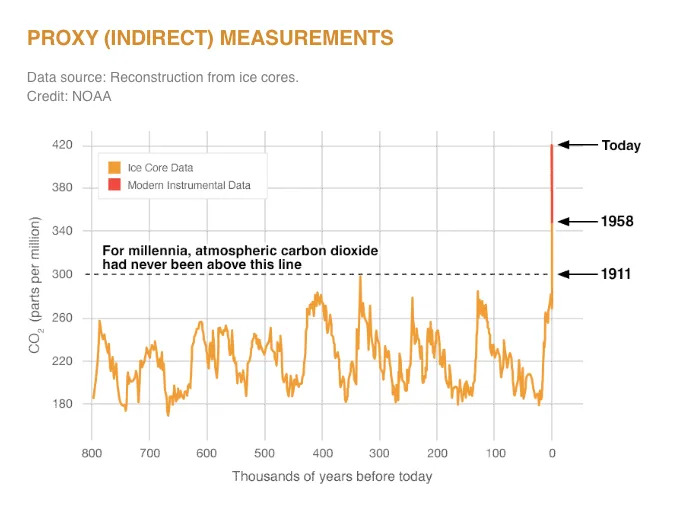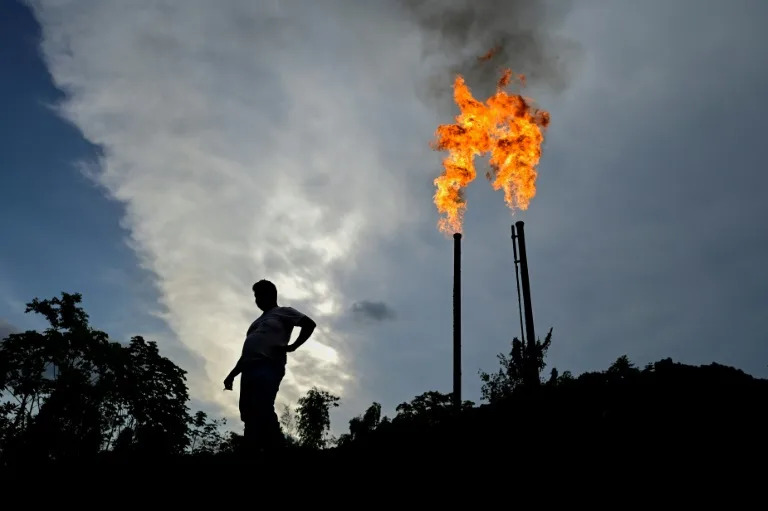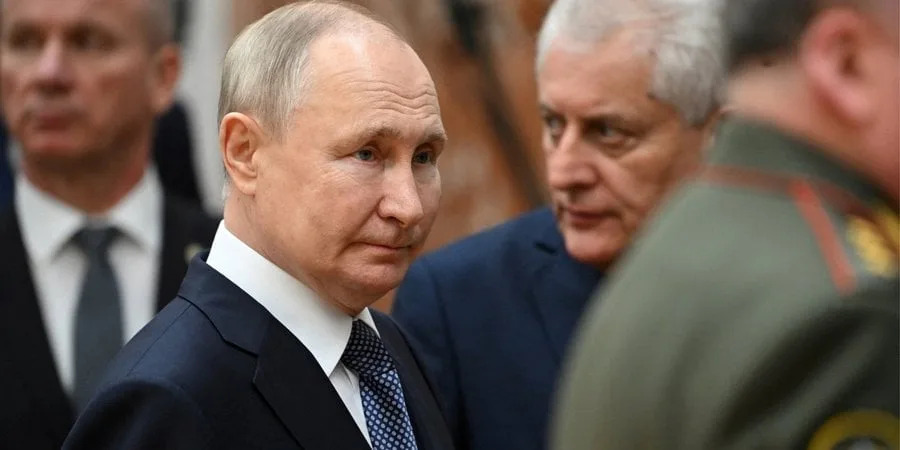USA Today
This number will shape Earth’s future as the climate changes. You’ll be hearing about it.
Elizabeth Weise, USA TODAY – November 30, 2023
Consider that 3 degrees Fahrenheit is the difference between a raging fever and a healthy toddler. Between a hockey rink and a swimming pool. Between food going bad or staying at a safe temperature.
Now consider that Earth is about 2 degrees Fahrenheit hotter on average than it was in the 1800s. It’s little wonder that has already led to measurable shifts in the climate: The last eight years have been the hottest in recorded history and 2023 is expected to be the hottest yet.
But there’s a looming threshold that will dictate the future of planet Earth. It could have cascading effects on how hot the planet gets, how much seas rise and how significantly normal daily life as we now know it will change.
The number is 2.7 degrees Fahrenheit.
World leaders at an annual gathering beginning Thursday will be spending considerable energy pondering that number, although they will use the Celsius version: 1.5 degrees.
“We can still make a big difference and every single tenth of a degree is enormously important,” said Anthony Leiserowitz, director of the Yale Program on Climate Change Communication.
Representatives and negotiators from 197 nations are gathering at an event called COP (Conference of the Parties) in the United Arab Emirates, a 13-day meeting that comes at what scientists say is a critical moment in the fight to keep the already dangerous effects of climate change from tipping over into the catastrophic.
Research published last month estimated humanity has only six or so more years before so much carbon dioxide has been pumped into the atmosphere that there’s only a 50% chance of staying below the threshold.
Why 2.7 degrees Fahrenheit is so important
In 2016, the United States and 195 other parties signed the Paris Agreement, a legally binding international treaty on climate change aimed at lowering the amount of greenhouse gases in the atmosphere to keep global warming at bay.
All the nations that signed the Agreement pledged to try as hard as possible to keep the global average temperature increase below 2.7 degrees, and to definitely keep it below a 3.6 degrees Fahrenheit rise. (Only the Agreement said it in Celsius, which comes out to the smoother-sounding 2.0 degrees Celsius and 1.5 degrees Celsius.)
The numbers sound pretty small – but they aren’t.
A few degrees is a big deal
The difference between 65 degrees and 67.7 degrees (that critical 2.7-degree difference) isn’t even worth carrying a sweater. So why does it worry climate scientists?
It’s because they’re thinking about global temperature averages, and when the global average goes up, the extremes go way up.
The Earth is already 1.1 degrees Celsius warmer than it was in the 1800s, about 2 degrees Fahrenheit. And it’s warming fast.
Ocean surface temperatures were the highest ever recorded this year, causing fish die-offs and increasing red tides.
People across America are already noticing the effects. Storms are more extreme, drenching areas with more water that’s causing an increasing number of devastating flash floods. Dozens of people in Vermont, Tennessee and Pennsylvania are only the most recent victims.
These aren’t just normal storms, these are deluges where four months of rain falls in one day.
We’re also experiencing more devastating droughts catastrophic wildfires and wetter hurricanes.

Why is it important to not let the Earth warm an extra degree?
The difference between an aspiration of no more than 2.7 degrees warming and a serious commitment to no more than 3.6 degrees might not seem large.
But multiply the extremes and their effects, and each results in a vastly different world. One is difficult, resulting in a less reliable and more chaotic climate than the one we live with today. The other verges on a movie cataclysm.
At their heart, the 13 days of COP28 negotiations are the place global governments sit down to hammer out just how much each will lower its carbon emissions, though many other climate change topics are on the table as well.
Using published research and reports from the U.N.’s Intergovernmental Panel on Climate Change, Carbon Brief laid out the likely measurable difference between a world that is 2.7 degrees warmer and one that is 3.6 degrees warmer:
◾ Sea level rise by 2100 of 18 inches vs. 22 inches
◾ Ice-free Arctic summer chance of 10% vs. 80%
◾ Central U.S. warm spells last 10 days vs. 21 days
◾ Percentage of people facing at least one severe heat wave in five years is 14% vs. 37%
Why is this all about fossil fuels?
Before the Industrial Revolution, the carbon dioxide in the atmosphere – which is what’s causing global warming – was 280 parts per million.
The current measurement is 421.47 parts per million.

The change has been underway for decades, but the extent of the shift is only now becoming clearly evident. In the 1980s, the country experienced on average a $1 billion, adjusted for inflation, disaster every four months. It now experiences one every three weeks. This year, the country has set a new record with 25 billion-dollar disasters.
The Earth crossed a key warming threshold in 2023, with one-third of the days so far having an average temperature at least 1.5 degrees Celsius higher than preindustrial levels. On Nov. 17, it reached 2.07 degrees above. This year is expected to be the warmest in recorded history, warmer than any other in 125,000 years.
What is COP28?
COP28 is the annual United Nations meeting of the 197 parties that have agreed to the U.N. Framework Convention on Climate Change, originally adopted in 1992. The meeting is the decision-making body of the countries that signed onto the U.N. framework. It is held to assess how well nations are dealing with climate change and set agendas and goals.
How important is this COP?
In a major report, the UN’s climate change body said earlier this month that global greenhouse gas emissions need to fall by 45% by the end of this decade compared to 2010 levels to meet the goal of limiting global temperature rise to 1.5 degrees Celsius.
Things are not going in the right direction. Instead, emissions are set to rise by 9%.
COP28 is where changes can be made.
Scientists say humanity has about a decade to dramatically reduce heat-trapping gas emissions before thresholds are passed that may make recovery from climate collapse impossible.
To do so will require cutting nearly two-thirds of carbon pollution by 2035, the Intergovernmental Panel on Climate Change said. That means ending new fossil fuel exploration and weaning wealthy nations away from coal, oil and gas by 2040.
“Humanity is on thin ice – and that ice is melting fast,” United Nations Secretary-General Antonio Guterres said in the spring. “Our world needs climate action on all fronts – everything, everywhere, all at once.”









